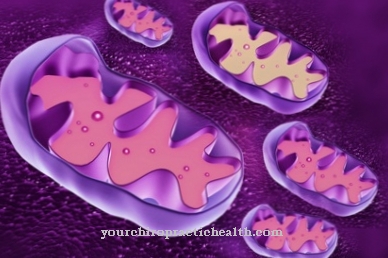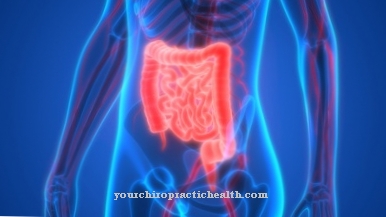Congenital and acquired Reflexes accompany us all our lives. If they are disturbed, this can indicate serious illnesses or a result of natural aging. A reflex is always the same reaction to a certain stimulus.
What is a reflex?

Biology differentiates between self-reflexes, external reflexes and conditioned reflexes. They are innate and controlled by the spinal cord. They serve to protect living beings. This is the only way to react quickly in the event of danger.
Reflexes are coordinated by nerve cells. A receptor and an effector are involved in every reflex. These are connected by nerves to form a reflex arc.
A reflex that I am sure everyone is familiar with is the hamstring reflex. If the kneecap receives a light blow, the leg will involuntarily move forward. The person concerned cannot prevent the bobbing at all. The reaction occurs without the brain being able to control it.
When a physical or chemical stimulus hits a sensory cell, it is converted into an electrical signal. The impulses are conducted via afferent nerve fibers into the spinal cord, where the stimulus is processed (afferent = leading to the central nervous system).
The stimulus reaches the muscle cells via an efferent nerve fiber that leads away. They represent the effector. The electrical excitation is transmitted from the nerve fibers to the muscle through the motor endplate.
The whole process is so quick that we don't even realize it. The brain cannot influence or control innate reflexes.
Function & task
Both the receptor and the effector are classified according to their location in the organism. The number of synapses in the reflex arc also plays a role in the categorization. The receptor is in the periphery, in the case of the patillary tendon reflex, for example, in the muscle spindle. If this is stimulated, the reaction is transmitted in a reflex arc via the spinal nerve, the spinal ganglion and over the hinterland to the spinal cord. This is where the reflex center lies. The stimulus moves on to the front horn, where it is switched to action potential and sets the motor skills in motion. There is a recognizable reflex.
In the case of self-reflexes, the excitation and the response to the stimulus take place in the same organ. Examples of this are the described patillary tendon reflex and the radial operiosteal reflex on the elbow. In the case of external reflexes, the locations of stimulus triggering and stimulus response are in different organs. An example of this is touching the hot stove top. The excitation reaches the human organism via the skin on the finger and is transmitted via afferent pathways to the reflex center in the spinal cord.
Early childhood reflexes are innate, but disappear after the first few months of life. The more the brain develops, the more these early reflexes are lost. They all have the goal of protecting the infant from injury and danger or of making feeding easier.
For example, the baby has a grasping reflex. It automatically accesses it when the palm of its hand is touched. A swimming reflex is also innate at this early age and can be observed in baby swimming courses. The babies automatically begin to paddle forward in the water, just like small dogs do. Infants also have a searching reflex. If the corner of the mouth is touched, they automatically turn their head in the appropriate direction. This is important in order to be able to find the mother's breast even blindly.
Illnesses & ailments
While early childhood reflexes are lost over time and this is a healthy process, many reflexes are also affected by illness or accidents. The liver disease Wilson's disease, for example, is common in children and leads to muscle weakness, sensory and reflex disorders and a loss of intelligence.
A concussion, like persistent vitamin B6 deficiency, can noticeably disrupt reflexes. Even hyperactive children often suffer from reflex disorders and show muscle twitching, often associated with insomnia, headaches and abdominal pain, loss of appetite and weight loss.
When nerve or brain damage occurs, pathological reflex disorders occur. The Babinski reflex is the best known of the pathological reflexes. If you stroke the sole of a sick person's foot, the big toe will stretch while the other toes bend down. It is one of the early childhood reflexes and usually disappears on its own after a year. However, these reflexes can reappear after a stroke or brain hemorrhage. Then it is the indication of significant brain damage.
In order to be able to assess a reflex response in the legs and arms, the doctor must always examine both sides. Only a comparison can be used to determine whether a disease may be present. Then there is a one-sided weakening or intensification of the reflex.
If the muscles are paralyzed after a stroke, there is often an increase in the muscles' own reflexes. The most extreme form of this increased muscle movement is the clonus, in which a muscle twitches continuously and rhythmically after a stimulus. The clone is the result of cerebral damage.
Parkinson's disease is also a typical example of impaired reflexes and creates balance problems. In the early stages, the disease manifests itself through an olfactory disorder; in the second stage, there is a typical sleep disorder, which affects the deep sleep phase.
Many reflexes weaken with age. It is a natural process and little can be influenced. This decrease usually occurs on both sides and is not limited to one organ or muscle.

.jpg)


























.jpg)